- More More
- Blog
- Inspire me
- Groups
- Offers More
- Dive Courses More
- Liveaboards
More

Liveaboard Trips
On-board accommodation offering the opportunity to live right over the dive sites and to experience secluded dives...
Diving regions...
- LATEST AVAILABILITY BY REGION
- Red Sea availability
- Maldives availability
- Indonesian availability
- Socorro Mexico availability
- Galapagos availability
- ALL LIVEABOARD DIVING REGIONS
- Bahamas
- Bikini Atoll
- Caribbean
- Cocos Island
- Destinations
MoreDIVING REGIONS...
Our Top destinations....Why not try....
Find a trip
- Resort
- Liveaboard
Diving with Cenderawasih Bay's Whale Sharks
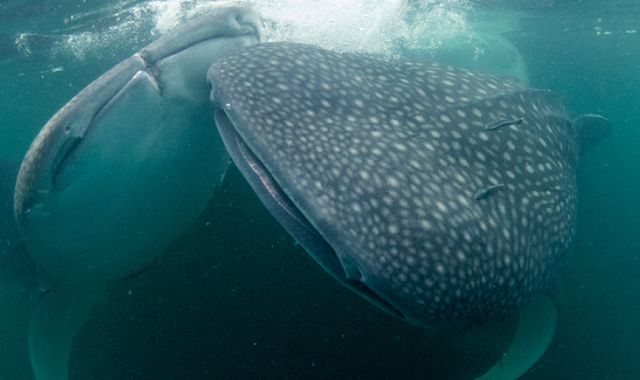
18 Aug 2025, Jo Charter
Jo Charter went off the beaten track on an Indonesia liveaboard trip to experience vibrant coral reefs, WWII wrecks, whale sharks and even a bit of muck diving. Find out more about her time exploring this underwater paradise on board Dewi Nusantara and her experience with one of the world's most majestic creatures, diving with whale sharks in Cenderawasih Bay.
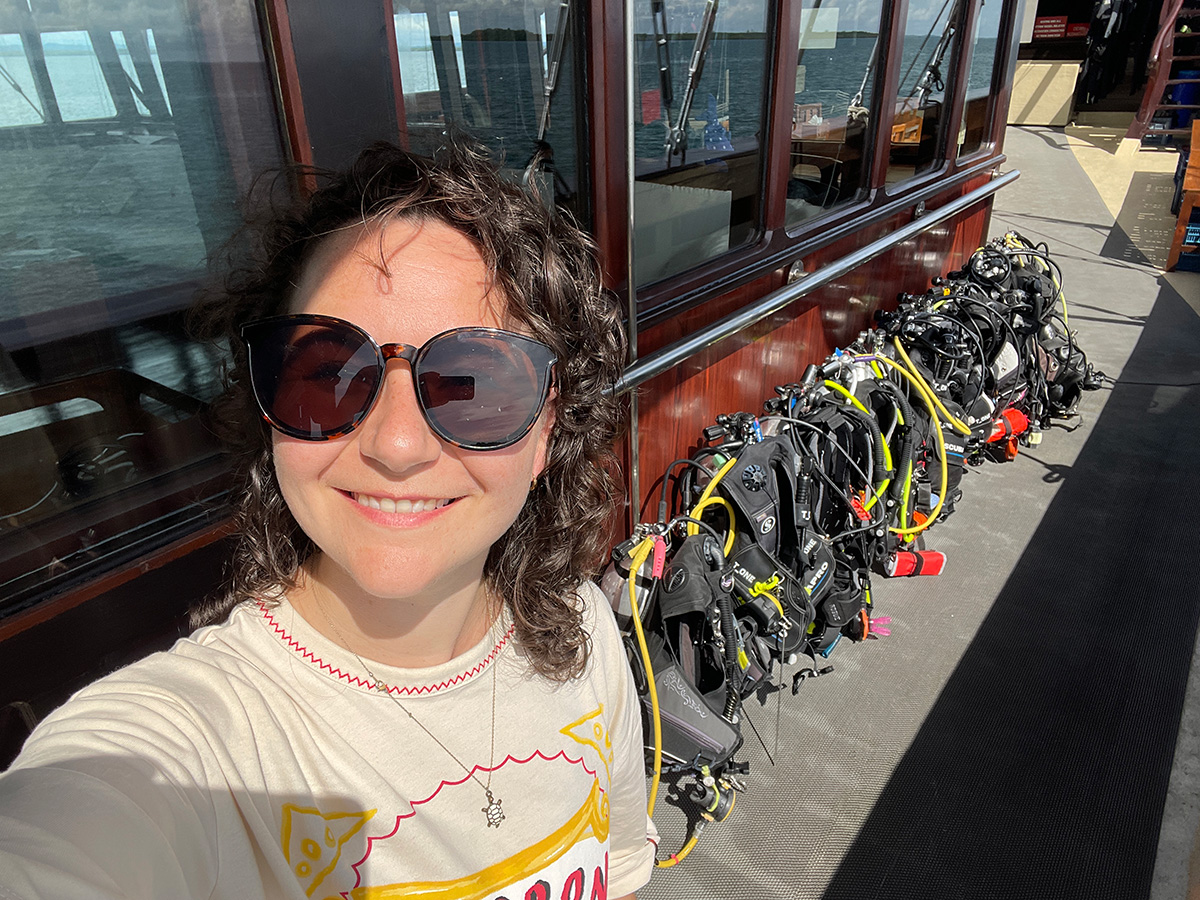
The Dewi Nusantara is as stunning schooner-style vessel, offering 5-star service and exceptional diving in Indonesia. While most wooden liveaboards in the region are traditional phinisi vessels, characterised by two masts and a distinctive V-shaped hull, the Dewi Nusantara was designed with a different vision. Her owners wanted to create more onboard space and a grander visual impact, all while retaining the essence of traditional Indonesian design. Constructed in 2007 by an experienced Bugis shipbuilder, the result is a luxurious and vast liveaboard that now sails through the remote, peaceful waters of Indonesia’s Coral Triangle, passing uninhabited islands along the way.
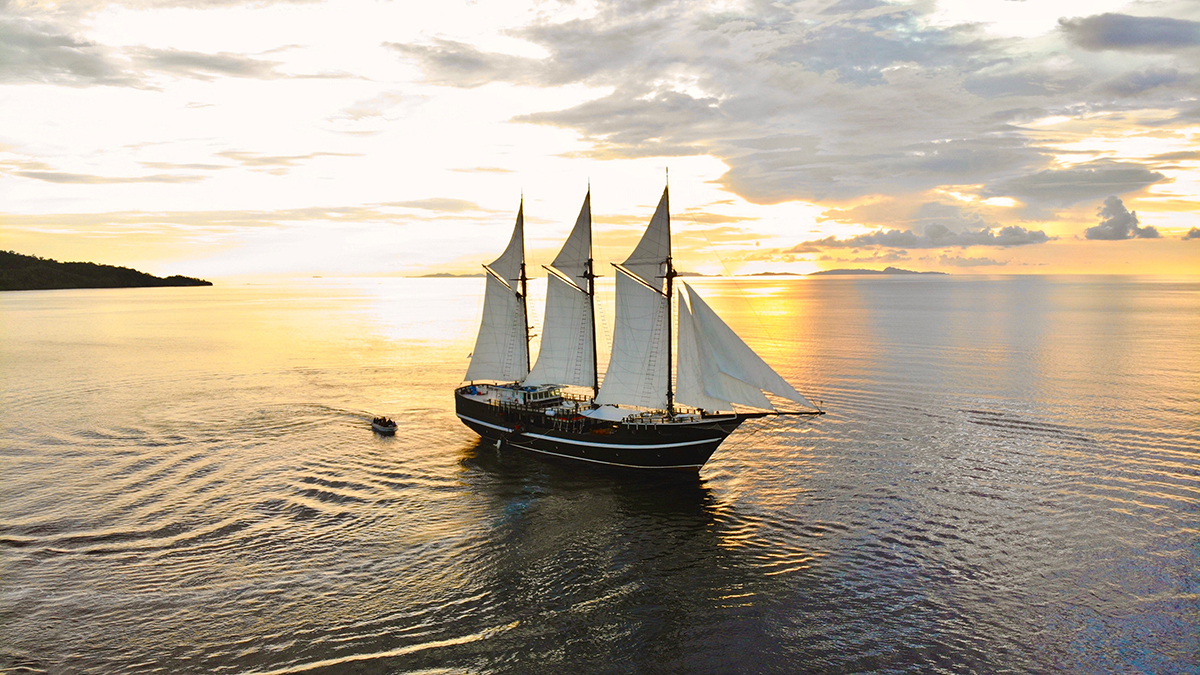
At more than 20 years old, many may write this vessel off to more recently constructed ships, but those that do are sorely missing out. Committed to keep the vessel (don’t say it, don’t say it!) shipshape, regular enhancements and maintenance have elevated the Dewi Nusantara beyond her already exceptional original glory.
We joined the Dewi Nusantara in Sorong, and set sail east around the Bird's Head Peninsula of West Papua into Cenderawasih Bay National Park. The vessel only operates in this area for a few weeks each year, and we were on the season's first departure. Before we even set a foot on board, the crew were warm and welcoming. Many have been part of the team for over 25 years, and their experience and dedication shows. The whole operation was seamless and thoughtful from beginning to end. A well run machine to say the least.
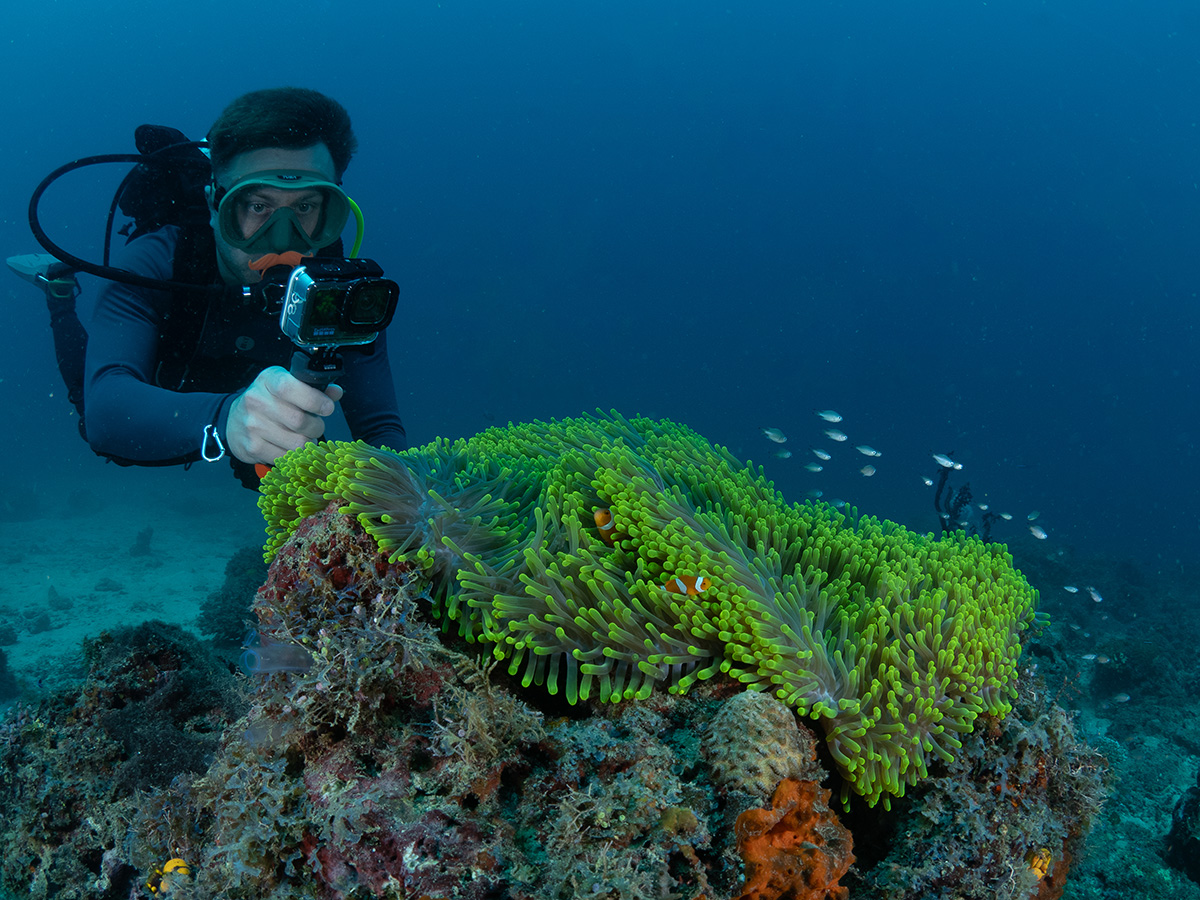
Diving with Whale sharks in Cenderawasih Bay
Now I'll jump to the good bit, even though this occurred mid-itinerary, we need to talk whale sharks, the biggest fish in the ocean. Known locally as Gurano Bintang, (beautifully translated as “starry shark”), these ethereal creatures are considered ancestral spirits by the indigenous peoples of Cenderawasih Bay. The local fishermen who inhabit the bagans (traditional fishing platforms) share their catch of silverside fish with the gentle giants for good luck, a tradition dating back generations. Today liveaboards and conservation organisations support this practice by compensating the fishermen in exchange for time in the water. For divers, this timeworn relationship almost guarantees up close and longer encounters compared to anywhere else in the world that I've come across.
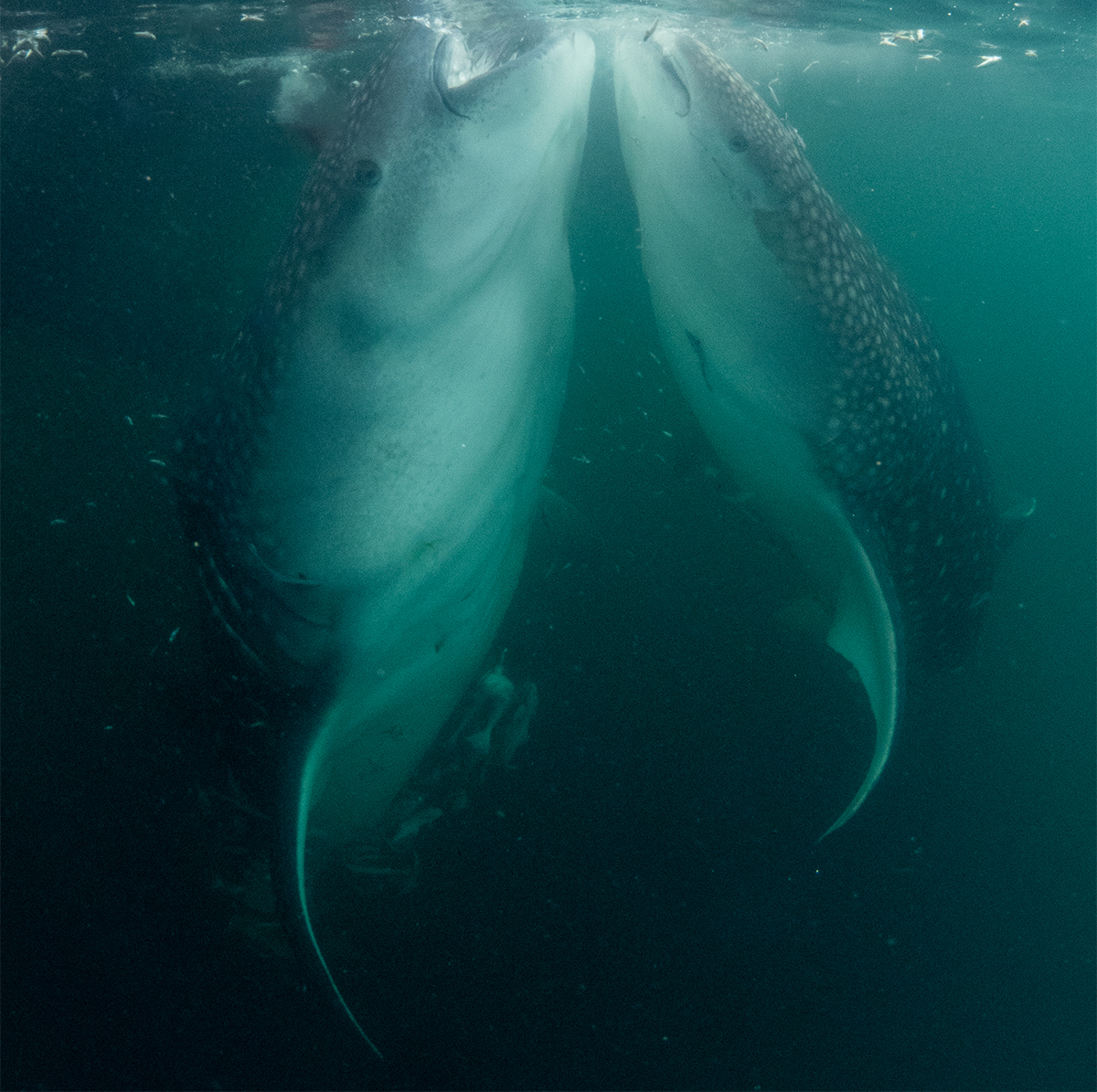
The Dewi Nusantara operated two half-day whale shark sessions during our itinerary in Cenderawasih Bay. Early morning, when we reached Kwatisore, the dive team visited the bagans to see how many whale sharks were at each local fishing platform. Not to see if they were there, but how many. That's how common they are in these waters. The cruise director, Yan, briefed us on best practices and explained that each of the two groups would have one dive per day, with the remaining time for snorkelling. Divers were positioned under the bagan, where 10-metre reference lines had been dropped, while snorkellers had full rein.

We set off in spacious, comfortable skiffs towards the bagan. We’d been told two whale sharks were present, and the excitement among us was palpable. My group was first to dive, while the rest snorkelled. Before we even reached the platform, we spotted the unmistakeable mouth jutting out the water. I've been lucky enough to have seen a few whale sharks in my time, but this was something different. We back rolled into the water and headed under the bagan with the whale sharks completely unbothered by our presence. Because so few liveaboards visit these waters, and for such a short season, the whale sharks aren't continuously hassled by tourists, and when treated with respect and space they allowed us to bask in their glory.
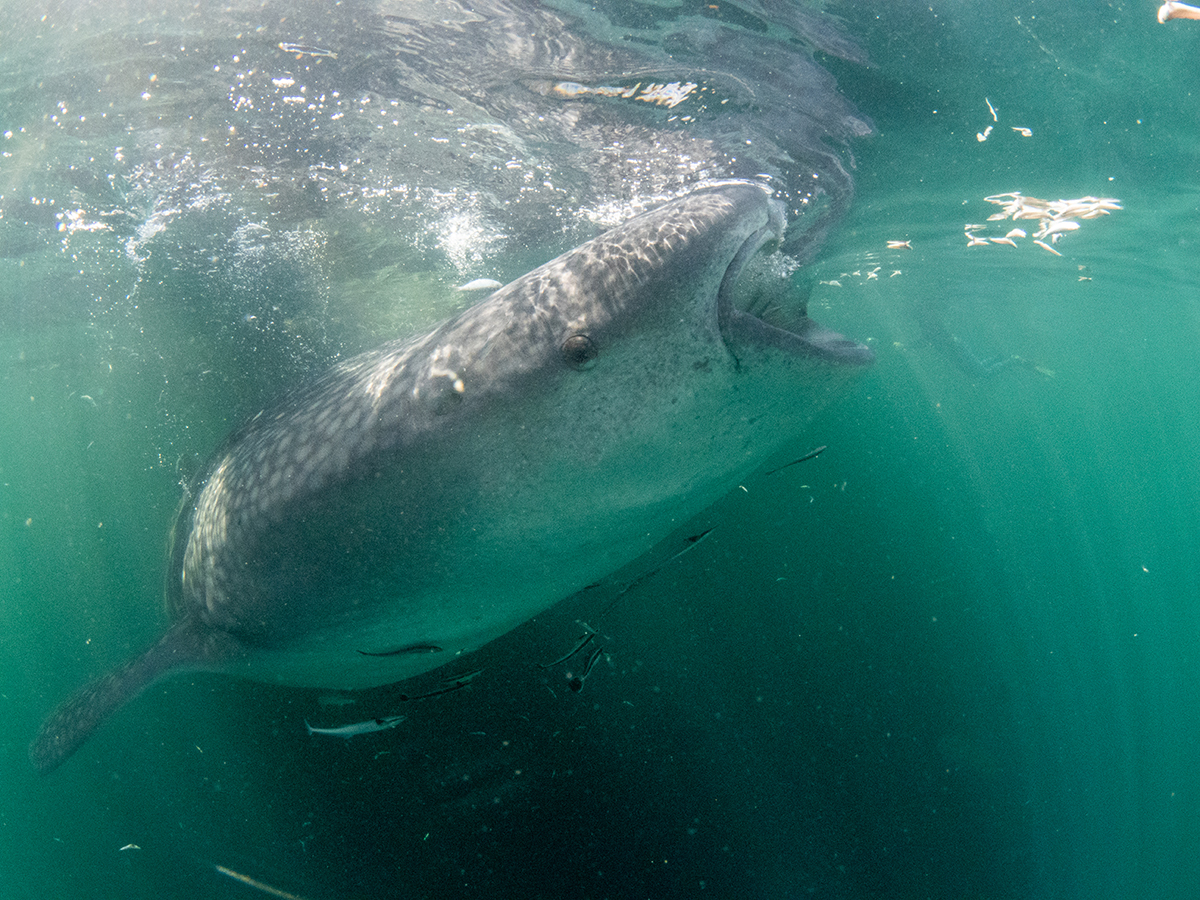
We spent over an hour watching two whale sharks at six metres, feeding, dancing and bumping into one another. After the initial adrenaline burst, observing from below was truly humbling. The largest whale shark measured about eight metres, the 'smaller' around five. Our guide suggested we check our dive computers while level with their tails for an indication of size. Although visibility was murky, it added to the ambiance. Occasionally, one would swim into the abyss, and that was when the fun started. We had no idea where they were going to pop up. We’d be watching one that was around and then all of a sudden, just inches from your elbow, a fish the size of a car would swim past. On one occasion, I turned to my buddy to do the “did you see that” point, only to see him mask-flooded-crying-with-laughing from watching me jump out my skin. We spent over four hours in the water with the whale sharks that day, only leaving the water for breakfast, and I couldn't wait to do it all over again.
On day two, we had more consistent sightings. This time there were three whale sharks; one biggen’ at over nine metres, who was absolutely the boss, and two smaller ones, around four to six metres, jostling for the best positions around the bagan. Snorkelling was another experience altogether. We watched in awe as their gigantic mouths hoovered the silverside from the surface, sending ripples down the length of their pale undersides with every gulp. It was a pleasure to float and absorb their behaviour, picking up on route patterns and hierarchy. Staying the recommended two metres away was a challenge at times, it was just best to stay in place and lay as still as possible (breathing in like a scene from Mission Impossible) as they glided beneath us. Although, they continued to keep us on our toes and there were plenty of muffled yelps through snorkels and giggles as one would catch someone off guard.
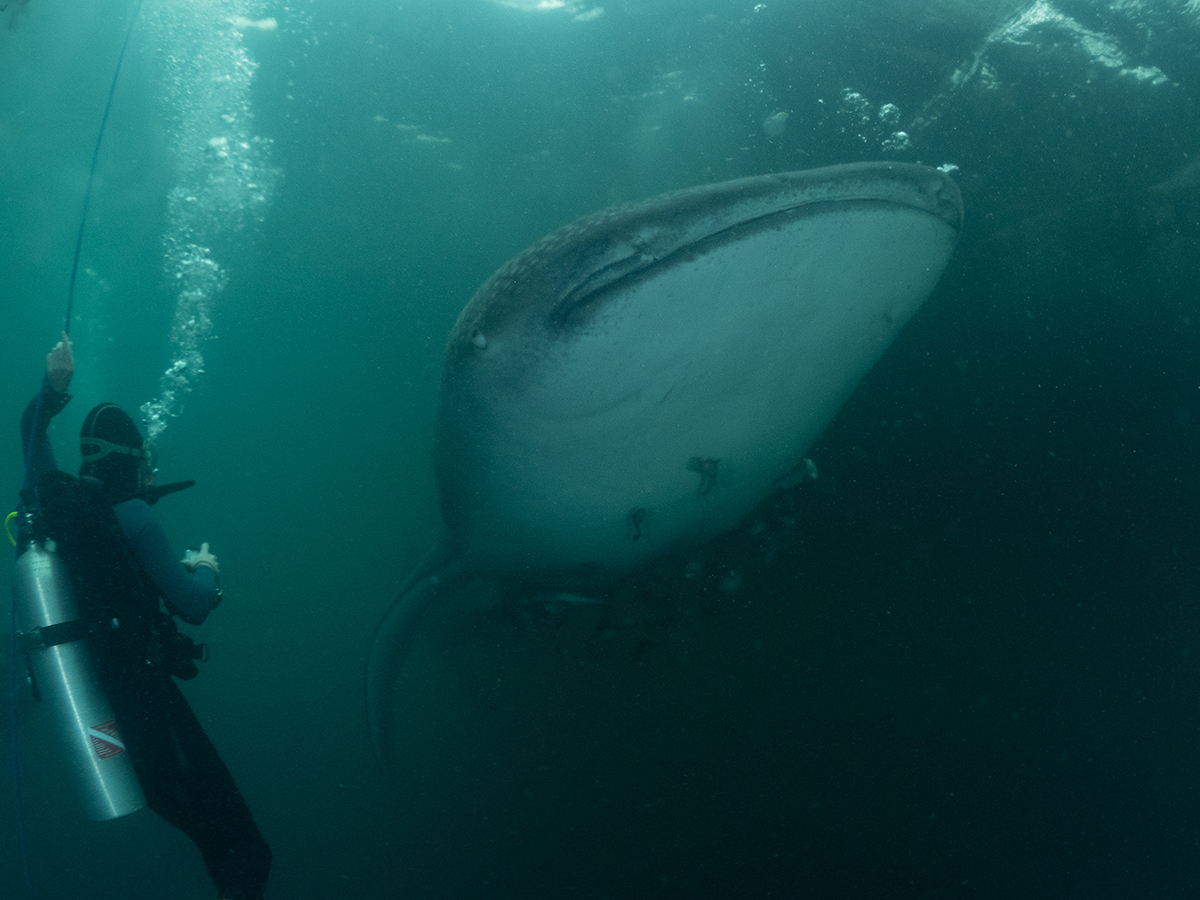
Throughout the whale shark encounters, the guides were exceptional - offering advice, answering questions, and recommending the best positions for the photographers and how to shoot the whale shark. When someone wanted to rest, a skiff was always nearby to watch from the surface, or a rope was offered to hold on to if the current was pulling, or we could be shuttled back to the mothership. Nothing was too much, and it was often offered before the thought had even crossed your mind. For those with cameras, having two days allowed us to settle into it and improve our positioning for the best shot, it was invaluable time (although that assumes that you have your camera on the right settings ... which I, rather embarrassingly, didn't on the second day!).
Other dive sites in Cenderawasih Bay
The high level of service continued on our other dives. My guide Risko was fantastic, he very quickly picked up mine and my buddy’s diving style and tailored our dives accordingly. His keen eyes spotted a wonder of tiny marine life and endemic species, even helping to frame shots. I really value a guide who listens to their divers, and each guide on board flawlessly did this. We spotted a number of endemic species, including the Cenderawasih fairy wrasse, Cenderawasih epaulette 'walking' shark, Caitlin dottybacks, Walton’s flasher wrasse and Cenderawasih long-nosed butterflyfish. The region’s unique geological history also means that some species typically found at deeper depths, like the ornate angelfish, can be seen within recreational limits.
Besides diving with whale sharks, the highlights of Cenderawasih Bay's diverse dive sites were:
- Manokwari’s Pillbox Wreck - a WWII vessel laying on its side, covered in corals and goat fish, but the star was the enormous cabbage coral patch next to it. I directed by buddy in an attempt to add scale to the images, but it still did not show the full extent of this beauty. Less cabbage patch and more cabbage field!

- Pasin Pajang - this was a muck night dive, something I hadn't expected in this area, but wow it delivered. Macro life included bottletail squid, Shaun the leaf slug nudibranch, pygmy pipehorse, juvenile waxy file fish, and sawtail shrimp to name just a few.
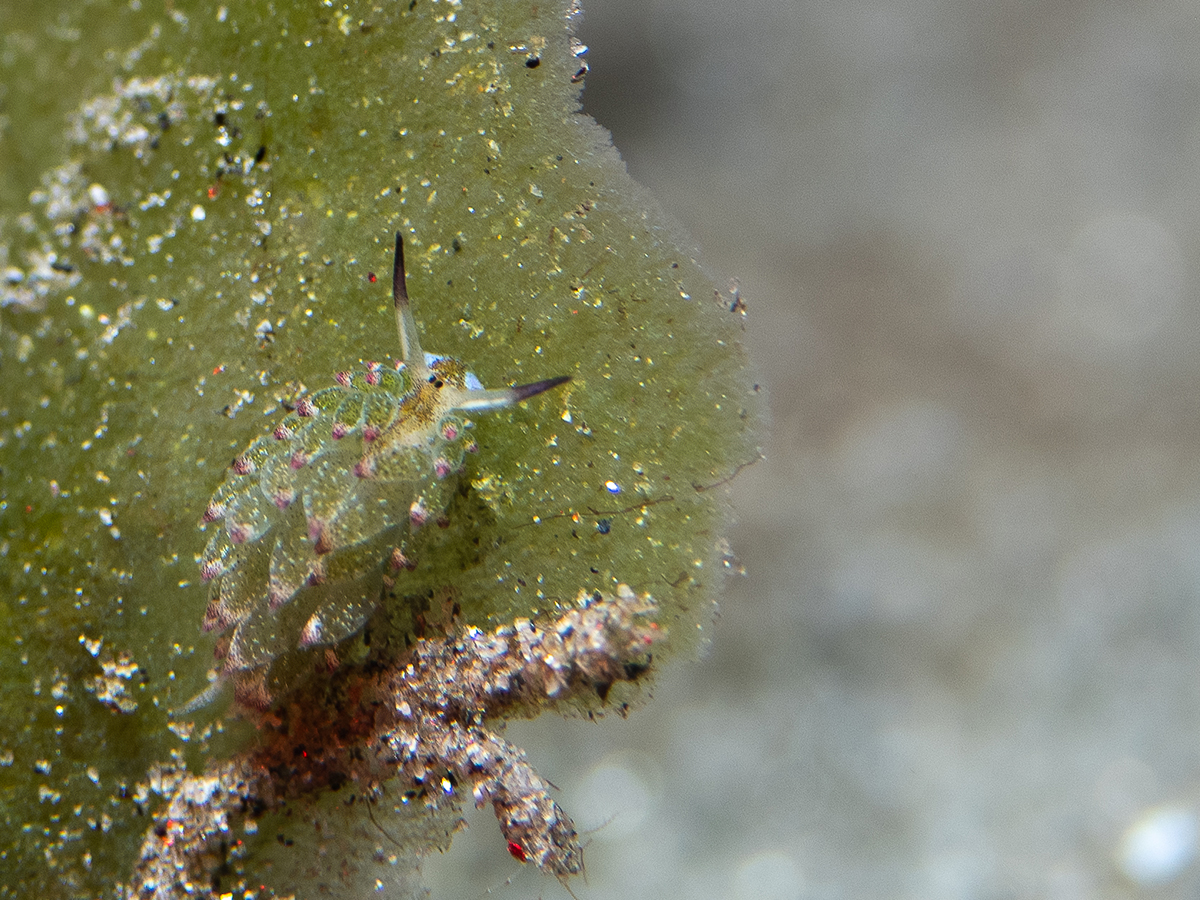
- Tanjung Manggar - this was my buddy’s 100th dive, I thought “well we won't see anything, it’s jinxed” and I was pleasantly wrong. We saw an almost entirely black oceanic manta ray in the first 10 minutes of the dive, then schooling barracuda, a wobbegong shark, several black-tip reef sharks, a hawksbill turtle and to top it off the liveliest spiny lobster.
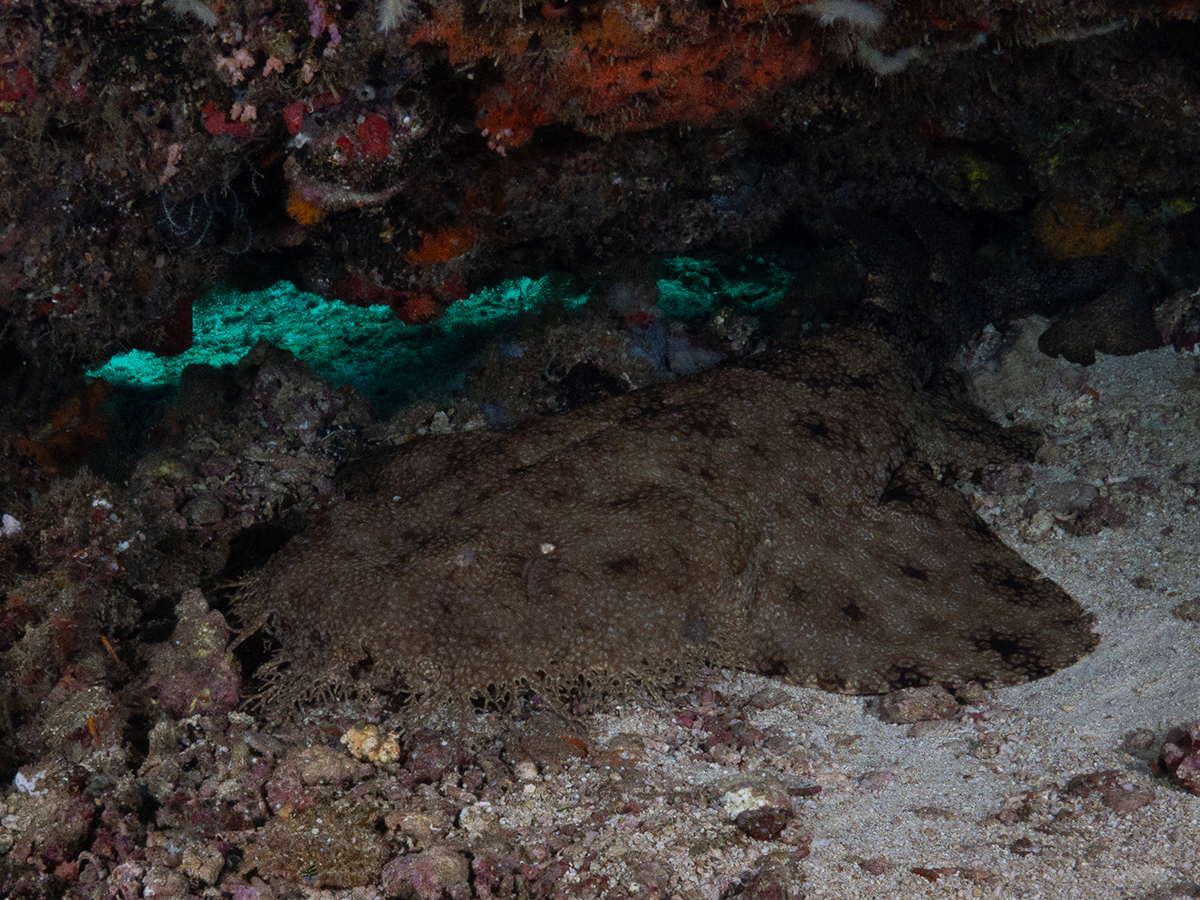
The ten nights I spent on the Dewi felt like a dream. Impeccable service, wonderful diving and world-class whale shark interactions. I’ve not even mentioned the post dive mini-massages and the hot chocolate after night dives, the generously sized cabins, or the best food I’ve ever had on a liveaboard.
I thoroughly recommend the Dewi Nusantara for anyone looking for an elevated liveaboard in Indonesia, you cannot go wrong with this crew.
If you want to see whale sharks in Cenderawasih Bay, join Dewi Nusantara on a future trip. Contact our team today to discuss your dive holiday plans.







